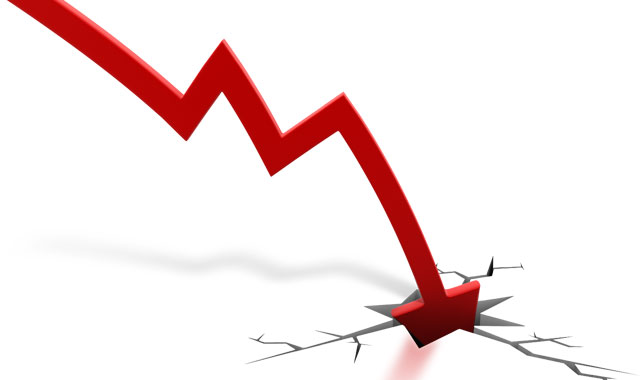
The latest Standard Bank South Africa Purchasing Managers’ Index (PMI) paints a bleak picture of the South African economy, signalling the most marked deterioration in operating conditions in over one-and-a-half years.
The Standard Bank survey produced by Markit, shows the downturn in South Africa’s private sector, which started last summer, intensified in March, with output and new orders falling at sharper rates and companies cutting jobs at a record pace.
The PMI fell from February’s 49,1 to 47 in March. Readings above 50 show an improvement in business conditions on the previous month, while readings below 50 show a deterioration. The average PMI reading over the first quarter as a whole was the worst since the inception of the survey in July 2011.
Meanwhile, input and output prices both rose more slowly, buying activity declined and inventories were reduced for the ninth month running.
Private sector companies in South Africa raised their charges in March, thereby continuing a trend that started when data collection began in July 2011. However, the rate of inflation slowed since one month previously to the weakest since last August. While 15% of panellists increased their selling prices, the vast majority (82%) left charges unchanged.
South African private sector firms reported a substantial decline in activity in March, the 11th in as many months and the most marked since July 2014, with about one in five companies reporting lower output. The pace of contraction accelerated markedly since February and was the strongest since July 2014.
Part of the decrease was attributed to a lack of demand. In line with the trend for output, new business fell sharply during the month in the fourth straight monthly drop. Survey participants partly linked this to commodity price developments, the drought and poor economic conditions.
The seasonally adjusted New Export Orders Index remained below the neutral 50 threshold at the end of the first quarter, thereby signalling a further decline in new business from overseas markets. The decrease was slightly stronger than that recorded in February, but slight overall. Exchange rate factors and unfavourable economic conditions contributed to the latest fall in new export orders, according to panellists.
The fall in new work was broad based, as new export orders also declined. With new orders and output falling sharply, South African private-sector companies scaled back their input buying and staff hiring activities. Private sector employment fell in March, thereby more than reversing the marginal rise recorded in February.
Moreover, the rate of job shedding signalled was the steepest in the PMI history, with 9% of companies cutting workforce numbers. A lack of incoming new work and poor economic conditions contributed to the reduction in headcounts, according to survey evidence.
Average staff costs in the South African private sector rose marginally during March, according to latest survey results.
The rate of wage inflation was in fact the joint second lowest on record. Although 8% of companies recorded higher average wages, the vast majority of the survey panel (87%) noted no change.
Input costs continued to rise during March, with unfavourable exchange rates continuing to exert upward pressure on inflation. That said, average staff costs also rose, albeit marginally overall. Some companies passed higher costs on to their clients, resulting in a further increase in average charges.
Stocks of purchases declined at the fastest pace in 20 months and backlogs of work were reduced further. Meanwhile, average delivery times lengthened for the fifth consecutive month.
Commenting on survey findings, Standard Bank economist Kuvasha Naidoo said: “The 2,1-point fall in March’s PMI to 47 indicates a faster pace of deterioration in private sector output in the month. Both supply and demand side PMI indicators imply continued weakness in South Africa’s economy.
“Output emerged as the largest drag to the index, falling to a close to two-year low. De-stocking continued for a ninth consecutive month in March, and this trend is likely to be exacerbated by the acceleration in the contraction in new orders. New export orders also show that external demand is weak and declining at a faster rate.
“Overall input prices remained elevated despite the pace of inflation slowing between February and March, with both purchase costs and staff costs increasing at decelerating rates. Notably, employment fell into contractionary territory after briefly surpassing the 50 points threshold in February. Output prices also increased at a slower pace in March.”




